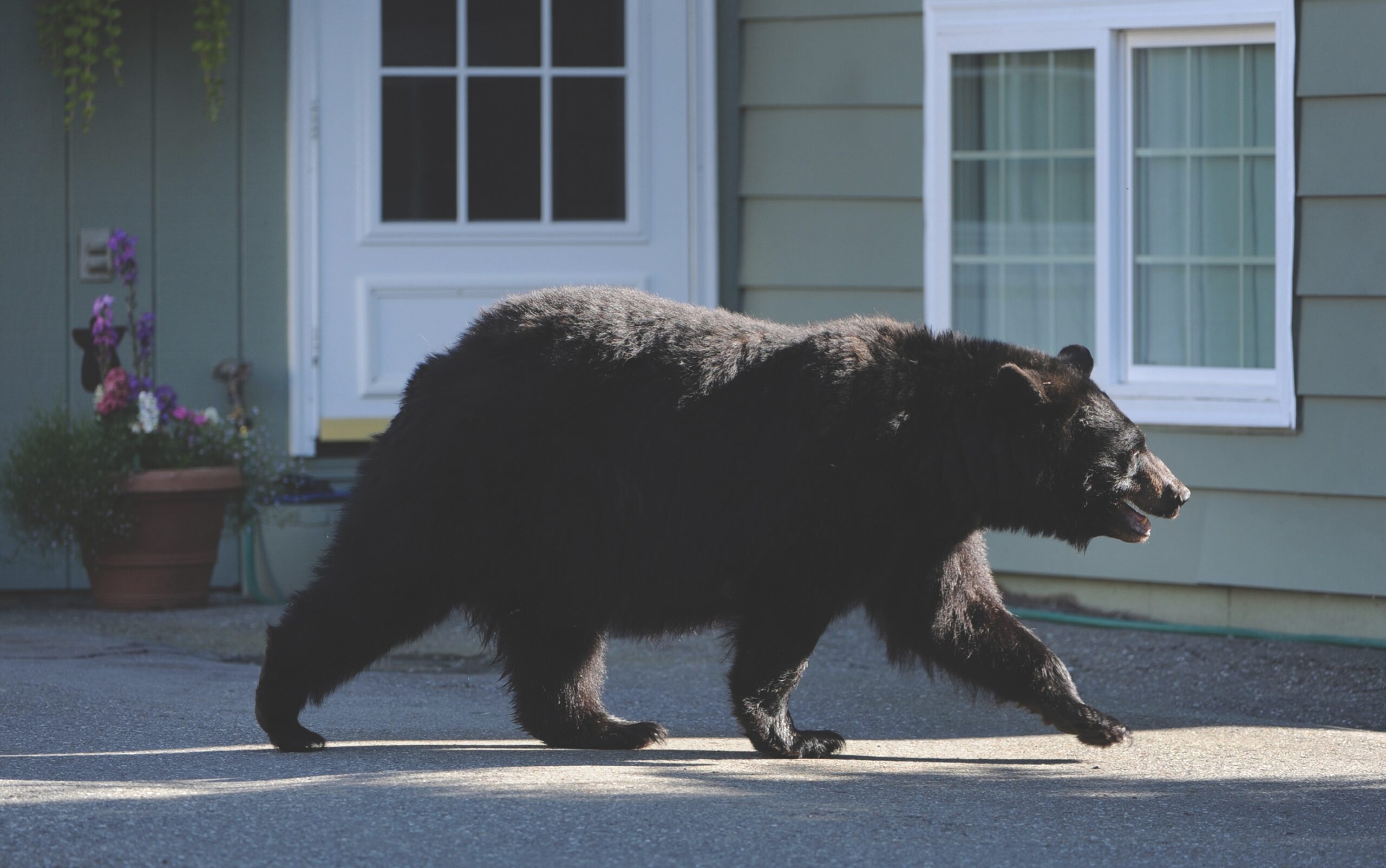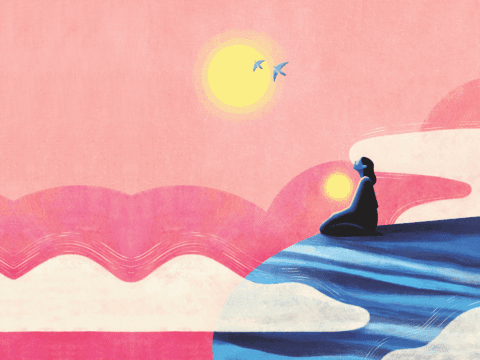A teacher of mine once defined attention as the most genuine form of love. He taught me this using a rock, which I was to observe for 15 minutes without composing metaphors, rehearsing geological history or discerning the face of Jesus in the markings. I was simply to see it, and it alone.
If attention is indeed the most genuine form of love, I loved a bear last year. I know I did, because I paid attention to that shy, sleek two-year-old black bear all summer long. Day after day, I scanned the woods for glimpses of him slipping down the game trails, splashing in the creek, leaning serenely against a big cedar in the forest.
You may unsubscribe from any of our newsletters at any time.
I attended to that bear when we accidentally met face to face, when my border collie Rose caught his scent and forced him up a tree, when the bear leaned out of the tree and hissed fearsomely.
And I paid attention in late September. A conservation officer had set a live trap at the turn in our road, intended for another bear who’d been thieving from village fruit trees in broad daylight. But instead of the nuisance bear, the trap held my shy friend. I averted my eyes and continued up the road, in part to honour his privacy, in part to cut off a flood of grief and shame: about his imminent death, about my powerlessness to prevent it.
But my heart stayed riveted on him, waiting and uncertain. I can’t say exactly why that two-year-old fascinated me. Part of it was because we shared territory. The stretch of earth in southeastern B.C. that I now call “my” land was also “his” land; we both found our shelter on this particular mountain, obtained much of our food from this soil. Part of it was our physical similarity: two arms, two legs, a head, the ability to walk upright. It might also have been our mutual inquisitiveness — me about him, him about the compost heap, the soopolallie berries, the rock labyrinth. There was also our shared capacity for play, a love of splashing in water on a hot summer day.
But for all our similarities, the differences were overwhelming. That bear could move with utter silence or sit perfectly still for hours. He could roll a dumpster, smell food from miles away, charge at 30 miles an hour. He was untamed and unfettered. A high priest of wildness, he tore back the curtain of everyday life to remind me that there were things I didn’t understand and would never control. He was power and mystery and humility, all wrapped in a black fur coat.
I’m not alone in loving bears. Stroll through any Canadian mall and you’ll find teddy bears dressed as Mounties, gummy bears for chewing, kids’ clothing covered with diminutive dancing ursines. You can build your own teddy, buy grizzly-shaped soap, keep your head warm with a snarling bear hat. I even received a Christmas card featuring a Santa-hatted bear in a cherry tree. Our consumer culture tends to domesticate bearness, turning predators into cuddly toys or entertainment.
In this, we differ greatly from our ancestors. Across the lake from my house, an as-yet-undated rock painting portrays a bear hunt, with the bear’s spirit rising to the heavens. The indigenous people of my area considered bears sacred and ferocious — emissaries of the natural world. The Celts, Gauls, Vikings and Romans did too, the evidence in caves and carvings, constellations and ceremonies, totem poles, costumes and baskets. Bears are part of our Judeo-Christian heritage: the she-bears that fulfilled Elisha’s curse, the bear that killed St. Euphemia. There is nothing cuddly in these relationships.
When my teacher gave me that rock, he cautioned against making up stories about it. He told me not even to think about it. He urged me simply to observe, to see it for what it was. To truly love a bear, I think, means to see that bear in its full complexity, not as a blank slate onto which we project our assumptions.
Bears can provoke fear, no question about it. They should. They are big and powerful, and not given to reasoned discussion. But something about these animals urges us to love them, too — for what they are, not for what we want them to be. They inspire acts of devotion.
I’m proud to say that I know some of these devoted bear people. There’s my friend Nell, who organizes community fruit-picking parties to discourage bears from foraging untended trees. There’s Mac, who has spent much of his life studying bears and trying to keep humans and bears at a safe distance from each other. Or Denny, a conservation officer whose efforts to teach people how to co-exist with bears are hampered by budget cutbacks.
Even my friend Janice loves bears. She was attacked and mauled by a black bear several years ago while riding her bike. She survived, but rather than retreat into fear, she resolved to understand bears better, starting with the malnourished and sickly bear that came after her. Janice now respects and admires bears. She has also developed a preternatural sense of their presence, waking up suddenly in the middle of the night to see cubs cavorting in the backyard.
None of these people love bears in a tame or uncomplicated way. For each, love has been accompanied by heartbreak. Nell watched as a mother bear, and then her two screaming cubs, were shot out of a tree laden with fruit; the owner had refused to let it be picked because it was “ornamental.” Mac, during his time in the bush, had to shoot a grizzly that charged him, an act that haunted him for years. Denny and the conservation officers who work for him kill about 100 bears every year, deaths that are almost always caused by human negligence. And Janice: well, she still carries the marks, both literally and in her psyche, of the bear who mauled her.
Each of my friends has struggled to understand bears as bears. They pay attention to what bears need, how they learn, what makes them fearful, what makes them safe. When I asked them for bear stories, they didn’t tell me stories that made me laugh; they told stories of mystery, grief and complexity. They told me holy stories.
It’s normal human behaviour to domesticate wild things, to see them in our own image. When I look out the back door to see what’s making such a racket and find a black bear hauling away the smelly old vacuum, well, it cracks me up. It’s fun to imagine she wants to clean her den.
It’s entertaining to hear the coffee-shop ladies tell about the bear that broke in, sat down, cleaned out the cereal cabinet and left his bum-print in dirt on the floor. It’s amusing to tease the guy who left his garage freezer unlocked, only to lose a ham, two bags of frozen perogies and a couple of gallons of ice cream to a newly awakened bear.
But these stories are only funny when married to the fuller reality of our relationship to bears. Tales of creative raids on fruit trees must be joined to the undeserved death of my dear two-year-old.
The teacher who taught me about love and attention also taught me that the opposite of love isn’t hate. It’s indifference. Our indifference and inattention might not matter if we didn’t share territory with bears; but we do. Every single province and territory of this country is home to at least one species of bear, and these ursine companions are central to maintaining the health of our ecosystems.
They are also our gift from the Creator: persistent reminders of the unsolvable tension between wild and tame; mystical ambassadors who speak of inexplicable sacredness; living symbols of the natural world. They are as untamed, and untameable, as grace — as ubiquitous as the Spirit.
***
This story first appeared in The United Church Observer’s February 2013 issue with the title “Something about bears.”













